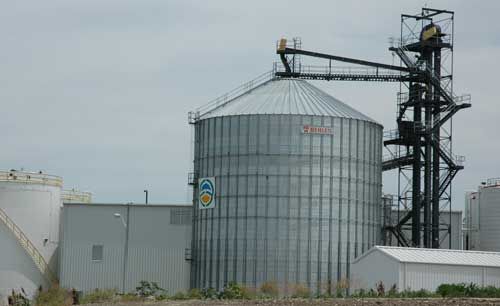The American Soybean Association said soy growers were “surprised and let down” by the Environmental Protection Agency after it released its annual “set” rule, which sets biomass fuel blending targets under the Renewable Fuel Standard. The EPA, whose announcement included obligations for 2023, 2024 and 2025, “threatens the integrity of the RFS by significantly dialing back annual increases in volume obligations,” the ASA said in a statement.
This year’s new set rulemaking process is the first in which Congress no longer specifies RFS volume targets, allowing EPA more flexibility in the decision. However, since 2013 EPA has been able to raise BBD requirements above the 1-billion-gallon minimum set in the statute, according to the ASA. EPA will solicit public comment on the proposed rule and hold a public hearing in January; it’s required to release the final set rule by June 14, 2023.
“America’s farmers have committed to the renewable fuels industry while continuing to provide the feed and food our country and other countries must have. Billions of dollars have gone into building and growing the infrastructure needed to support this industry. And our president has made a clear commitment to mitigating climate change and lowering greenhouse gas emissions—the very tenets of the RFS,” said Brad Doyle, ASA president and soy grower from Arkansas.
“And yet, this draft rule slams the brakes on progress being made in biofuels investment and growth. Instead of continuing to support available, low-emission plant-based fuel sources, EPA has changed course and seemingly is ignoring the major investments in and consumer demand for biomass-based diesel and other biofuels that exists right now,” Doyle said.
The Clean Fuels Alliance also blasted the EPA’s announcement, saying it would “undercut…investments in biodiesel and renewable diesel capacity. The minor increases for biomass-based diesel volumes in 2023, 2024 and 2025 are below the industry’s existing production and ignore the clean fuels industry’s significant investments in new capacity.” The new rules “provide no additional space for sustainable aviation fuel and short-circuit the nation’s goals to cut carbon emissions,” the CFA said.
EPA’s data from the RFS program show that the United States market reached 3.1 billion gallons of biomass-based diesel in 2021 and already 2.9 billion gallons through October 2022, with two months still to go. The Energy Information Administration’s Short Term Energy Outlook, which informs EPA’s decisions on annual RFS volumes, currently projects a 500-million-gallon increase in biodiesel and renewable diesel consumption for 2023. EIA has also projected 2.4. billion gallons of added renewable diesel capacity coming online by 2024 and calculated another 1.8 billion gallons in announced planned capacity.
When setting RFS volumes, EPA must consider the infrastructure and rate of future commercial production for advanced biofuels like biodiesel, renewable diesel and SAF. According to the Energy Information Administration, biodiesel and renewable diesel capacity is already 750 million gallons higher in 2022 compared 2021. EIA’s Short Term Energy Outlook projects availability of 3.9 billion gallons of biodiesel and renewable diesel in 2023. Furthermore, USDA’s successful Higher Blends Infrastructure Incentive Program has already supported infrastructure investments for an additional 1 billion gallons of biodiesel. Congress has made a strong commitment to continue infrastructure grants through 2030.
“EPA’s overdue set proposal significantly undercounts existing biomass-based diesel production and fails to provide growth for investments the industry has already made in additional capacity, including for sustainable aviation fuel. The volumes EPA is proposing for 2023, 2024 and 2025 ignore the more than 3 billion gallons currently in the market and fail to take into account the planned growth of the clean fuels sector,” said Clean Fuels Alliance Vice President of Federal Affairs Kurt Kovarik.
“The biodiesel and renewable diesel industry has already made considerable investments in production capacity and distribution infrastructure that will come online by 2025. The soybean and canola industries have invested more than $4 billion to bring additional feedstock capacity online over the next several years,” Kovarik said. “EPA’s proposed biomass-based diesel volumes undercut those investments.”
David Murray can be reached at [email protected].




